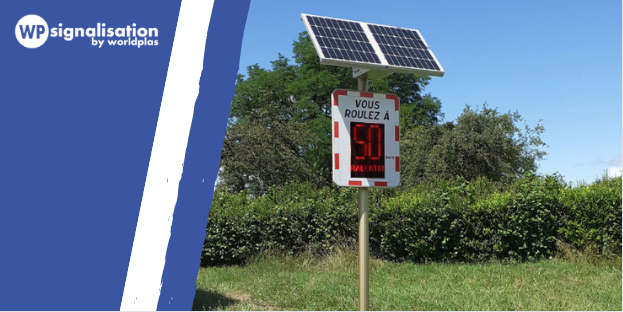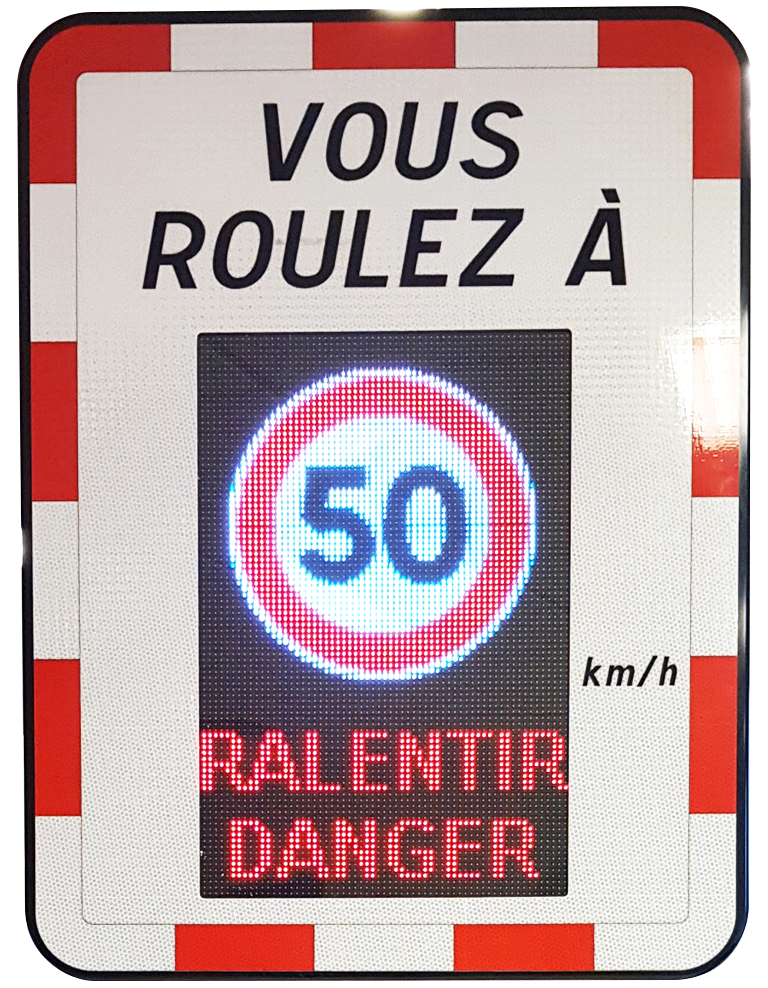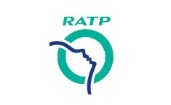
How does the educational radar work ?
So, speeding is a global issue that can lead to serious consequences. Thus, to raise awareness among drivers and reduce the risk of accidents, the educational radar was launched by the government in 2011.
General Presentation

The educational radar is an essential prevention tool to combat speeding by motorists. likewise, it informs drivers about their actual speed but also aims to encourage them to slow down in high-risk areas with brief messages.
Generally, they are installed in urban areas, but they are also present on high-risk roads. Indeed, it records the speeds and direction of vehicle passage to establish statistics on the usage patterns of the equipped road.
The Objective
The radar aims to alert drivers about their driving speed. However, its main objective is to raise awareness among drivers about their speed in order to limit excess speed and ensure safety.
The radar is different from the traditional radar, which detects speeding and issues fines. Instead, the educational radar simply displays vehicle speeds on a screen and may be accompanied by messages or symbols such as smileys.
The Operation of the Educational Radar
By using the Doppler effect, it calculates the actual speed of the vehicle at the moment of passage. Therefore, the data is then transmitted to the radar screen to alert drivers. Which allows the radar detects vehicles upstream, at a distance ranging from 50 to 200 meters.
Installation Locations
For exemple, this radar is frequently used in sensitive and dangerous areas where the risk of accidents can increase if speed is not controlled.
Here are some common locations where educational radars are installed :

Near schools and hospitals
Firstly, Schools and hospitals are areas where pedestrian presence is common. Thus, installing educational speed radars in these locations will help slow down drivers to ensure the safety of pedestrians, who may include children or elderly individuals.

At the entrance of urban areas
Secondly, near urban areas, the risk of accidents is higher due to the higher population density and consequently more pedestrians. The radar serves to slow down drivers to protect pedestrians.

Near pedestrian crossings
Thirdly, near pedestrian crossings, because this makes drivers to slow down and consequently give priority to pedestrians crossing.

In 30 km/h zones
And last but not least, the educational speed radar can be installed in areas where the speed limit is 30 km/h to enhance the safety of pedestrians and cyclists but also enforce the speed limit.
What the regulations say
According to the decree of November 24, 1967, regarding educational speed radars, several elements must be respected regarding the display :

The message displayed on the screen must be :
- either only the indication of the detected speed when the vehicle respects the authorized limit
- or a warning message (for example: ATTENTION, DANGER, or SLOW DOWN) if the vehicle does not respect the limit and is therefore above the authorized limit. All things considered it can be supplemented by indicating the speed if the authorized speed is not more than 10 km/h in urban areas, or a danger signal if it is higher.

Basicallly, the color of the displayed speed must be :
- Green, yellow, or white-yellow if the authorized speed limit is respected.
- Red, yellow, or white-yellow if the driver’s speed exceeds the authorized limit.
What WP Signalisation offers
We offer our robust, reliable educational speed radar, providing the best quality-to-price ratio.
Usage
Besides, with our WPSGEO application, you can connect via Wi-Fi to the radar for configuration and access to statistics.
Configuration
The maximum vehicle detection distance is 150m, and the minimum distance is 10m. Besides, you can change the speed to adjust the limit and customize the text and image for speed violations.
Statistical Analysis
Consequently, statistics are collected for both directions of traffic, and there’s an option to filter data for analysis (for exemple., by hour, day, date, direction).
The analysis summary provides you with the number of vehicles, average speed, maximum speed, following by the percentage of speeding violations.
Different Models
- Ecological radar : solar-powered with a 100-watt solar kit
- Economic radar : without power source (battery and external charger)
- Urban radar : mounted on streetlights
- Functional radar : mains-powered (220V)
- Educational radar : with smileys (green or red depending on the speed)
Generally, each of these models meets specific needs and/or expectations. Therefore, WP Signalisation advises you to carefully consider your environment, budget, but also resources when making your choice.
Installation Service
WP Signalisation also offers an installation service for various electronic devices and traffic signs.
Discover our educational speed radar on our shop panneau de signalisation, and for more information, please contact us via our form.









